IP Monitoring Software: 5 Best Tools for 2025 [Free & Paid]
Identify devices, track activity & get real time security alerts
5 min. read
Updated on
Read our disclosure page to find out how can you help Windows Report sustain the editorial team. Read more
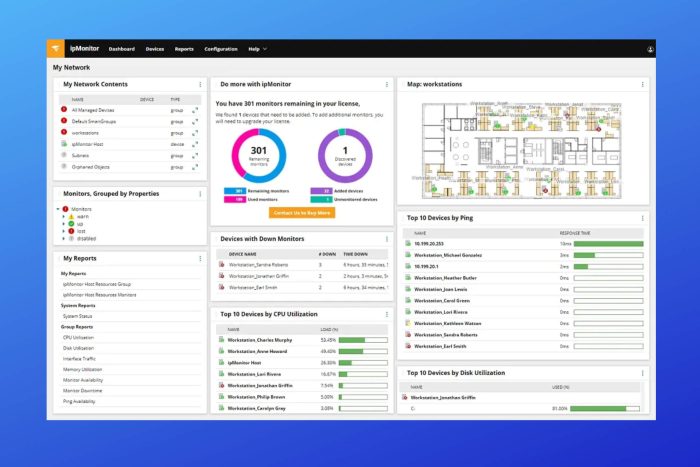
If you’re looking for reliable IP monitoring software to ensure the health and performance of your network, you’re in the right place.
Find below top options for your needs whether you’re an experienced network admin or are managing a small local network.
Best IP monitoring software
All of the tools below include must-haves for effective IP monitoring such as:
- Real-time monitoring and alerts
- Historical data analysis
- Device discovery
- Ability to handle large networks
- Support for custom scripts, plugins, and integrations
- Advanced security with encryption or access controls
- Value for money
Let’s check them out one by one.
1. PRTG Network Monitor

PRTG Network Monitor is ideal if you value a flexible pricing model, making it a cost-effective solution for various sizes of networks.
It automatically discovers new devices. This makes detecting unauthorized connections and performing inventory management easy.
With Ping v2 and Cloud Ping v2 sensors, it ensures device reachability. The Packet Sniffer and Flow sensors pinpoint network bottlenecks and enhance security.
DNS v2 sensors protect against attacks by monitoring DNS server response times.
However, advanced features may require higher-tier plans, and setup may be complex for beginners.
Pros:
- Flexible pricing model based on sensors used
- Easy to set up with auto-discovery of network devices
- Offers a wide range of sensors for different monitoring needs
- Includes customizable notification and reporting options
- SNMP Monitor
Cons:
- Overwhelming interface
- Pricing model can be limiting for some
2. ManageEngine OpUtils

ManageEngine OpUtils also has customizable dashboards that are easy to operate through a user friendly interface. It’s a great choice if you seek customizability.
This tool is compatible with a wide range of IT infrastructure. It supports physical, virtual and cloud environments.
Also, if you’re on a budget, you should know that OpUtils offers a free version. Though limited for advanced users, it offers fundamental monitoring features.
You can try out this version and see how it works for you before making a commitment.
While its scalability is commendable, some advanced functionalities are exclusively available in higher-tier plans, a consideration for users with specific requirements.
Pros:
- Intuitive user interface
- Real-time monitoring
- Alerting system
- Support for physical, virtual, and cloud environments
- Availability of a free version with basic monitoring functionalities
Cons:
- Advanced features limited to higher-tier plans
- Integration with other ManageEngine products may require improvements
3. SolarWinds ipMonitor

SolarWinds’s ipMonitor tool is perfect for jobs such as detailed checking of network performance and availability monitoring. It’s a good choice if you’re a professional network administrator.
You can customize the dashboard based on the information you seek most. Furthermore, you can enable real-time alerts and get notifications whenever there’s an important change in your network.
Also worth noting is that it supports a wide range of network devices making it a versatile tool for diverse IT environments.
Advanced features like NetPath for critical path visualization offer deep insights into network performance issues.
What sets SolarWinds ipMonitor apart is that it allows you to customize it to fit the specific needs of your network.
Pros:
- Network performance monitoring
- Customizable dashboards
- Real-time alerts
- Advanced features like NetPath for critical path visualization
- Free tier and premium tier
- VM Host Monitor
Cons:
- Learning curve
- Premium tier is expensive
4. Nagios XI
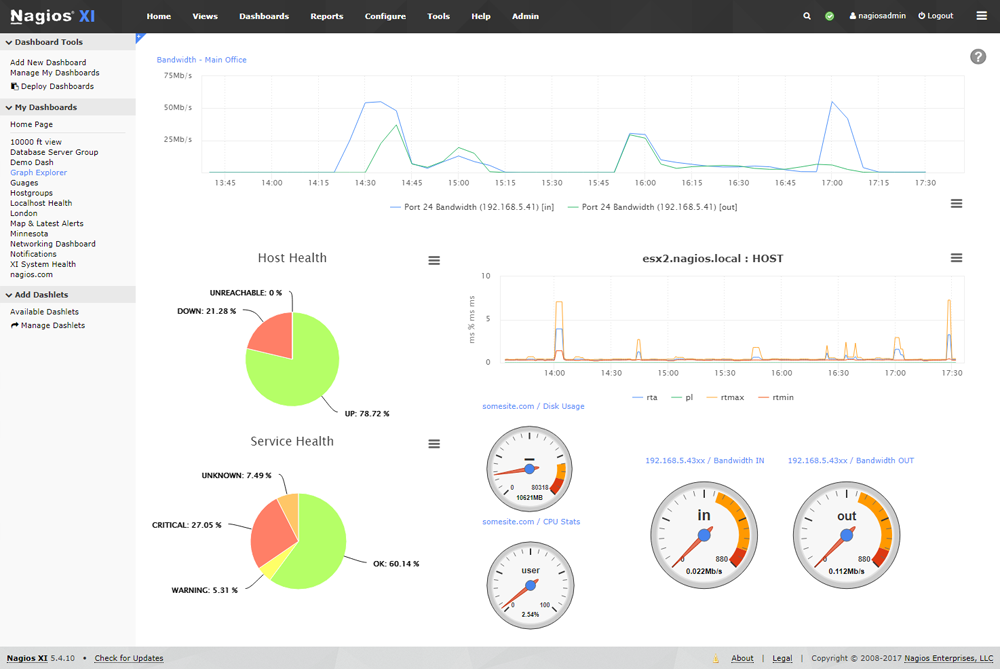
Nagios XI is a great choice if you need a highly customizable open-source solution. Furthermore, it supports tons of plugins.
Its comprehensive monitoring capabilities extend to networks, servers, and applications. No matter what you want to monitor, you can set up advanced alerting and reporting.
Its real-time monitoring capabilities enable users to promptly detect and address issues as they arise.
It has a large user base that offers extensive documentation and plugins to extend its functionality.
Unique to Nagios XI is its configurability, which, while offering great flexibility, presents a steep learning curve for new users.
The interface may not be as modern as some competitors, but its capabilities are robust.
Pros:
- Open-source solution with a large community support
- Highly customizable with a wide range of available plugins
- Offers comprehensive monitoring of networks, servers, and applications
- Advanced alerting and reporting capabilities
Cons:
- Steep learning curve for new users due to its configurability
- User interface is not as modern or intuitive as some competitors
5. Zabbix
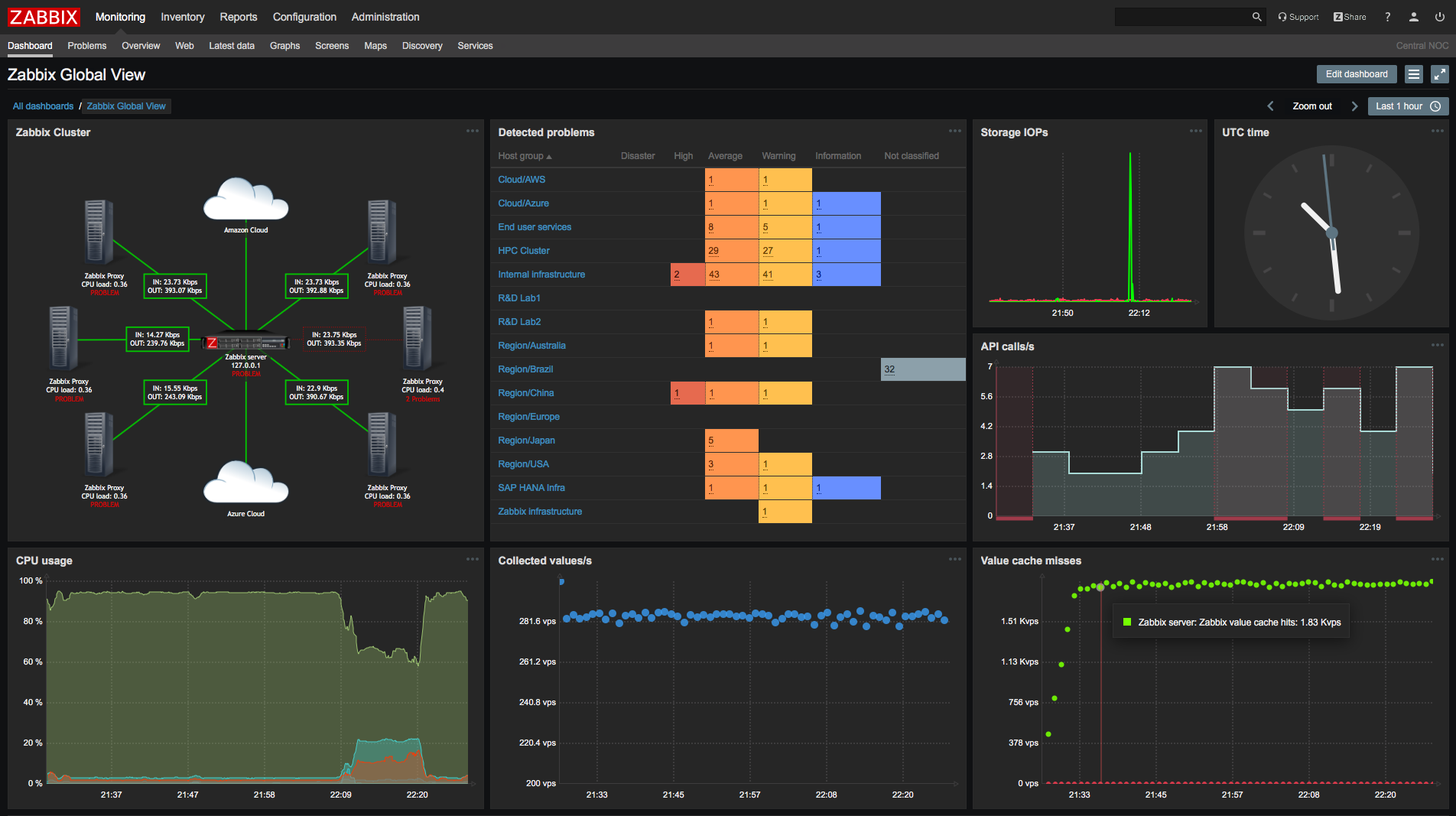
Zabbix is ideal for those looking for a free and open-source software solution that offers comprehensive monitoring options without licensing costs.
It’s highly scalable, suitable for both small and large environments, and supported by an active community.
Benefits include its wide range of monitoring options, including network, server, and application monitoring, all without the financial burden of licensing fees.
Unique features like its scalability and active community support make Zabbix a strong contender, though newcomers may find its configuration and setup challenging.
Pros:
- Free and open-source software with no licensing costs.
- Offers a wide range of monitoring options including network, server, and application.
- Highly scalable, suitable for small to large environments.
- Active community and plenty of documentation available.
Cons:
- Configuration and setup can be complex for beginners.
- Some users report the web interface can be slow with large datasets.
Bottom line
When choosing the right IP monitoring software for your needs, consider the specific requirements of your network environment.
Each of these tools offers unique features and benefits, so selecting the one that best matches your needs will ensure optimal network performance and reliability.



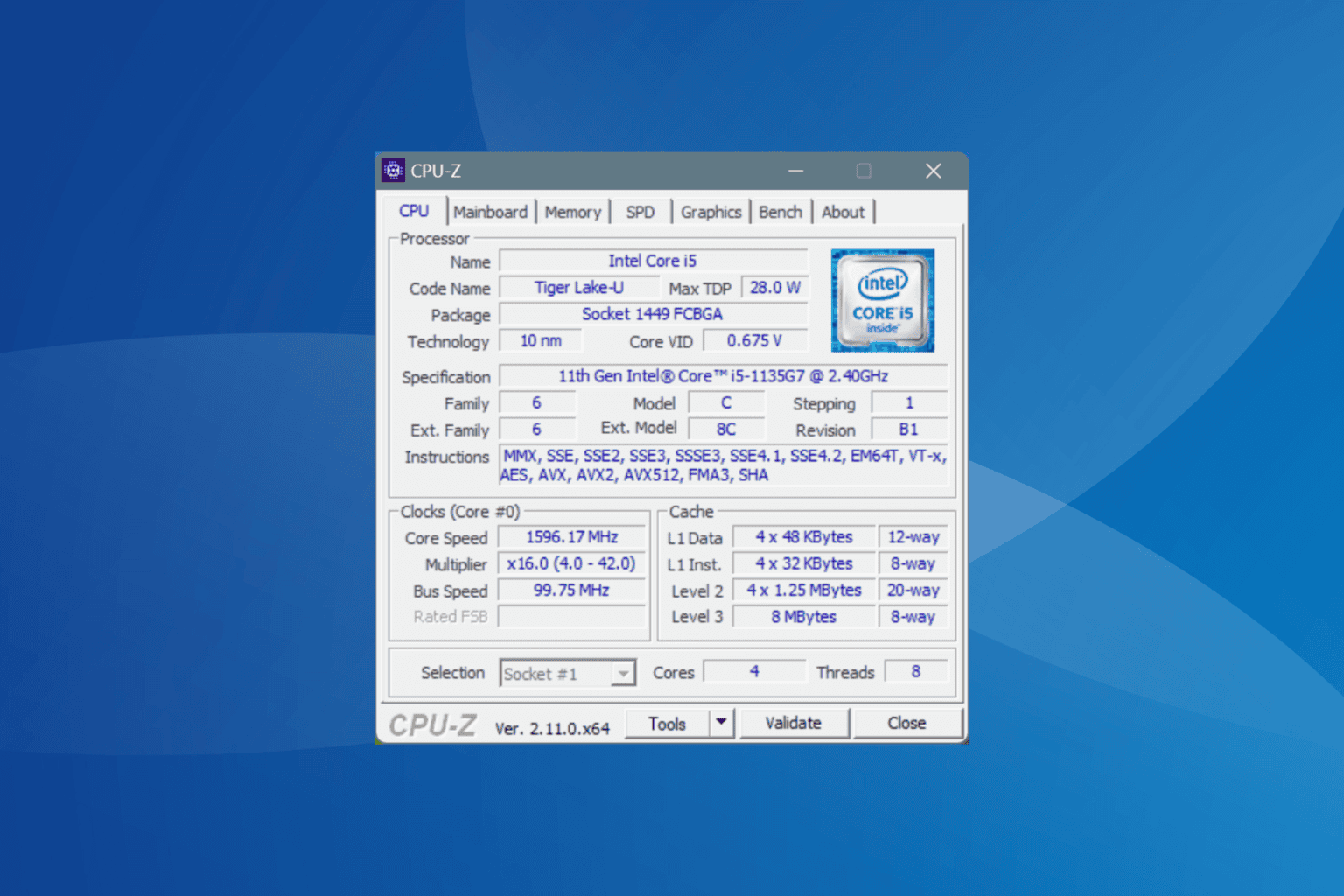
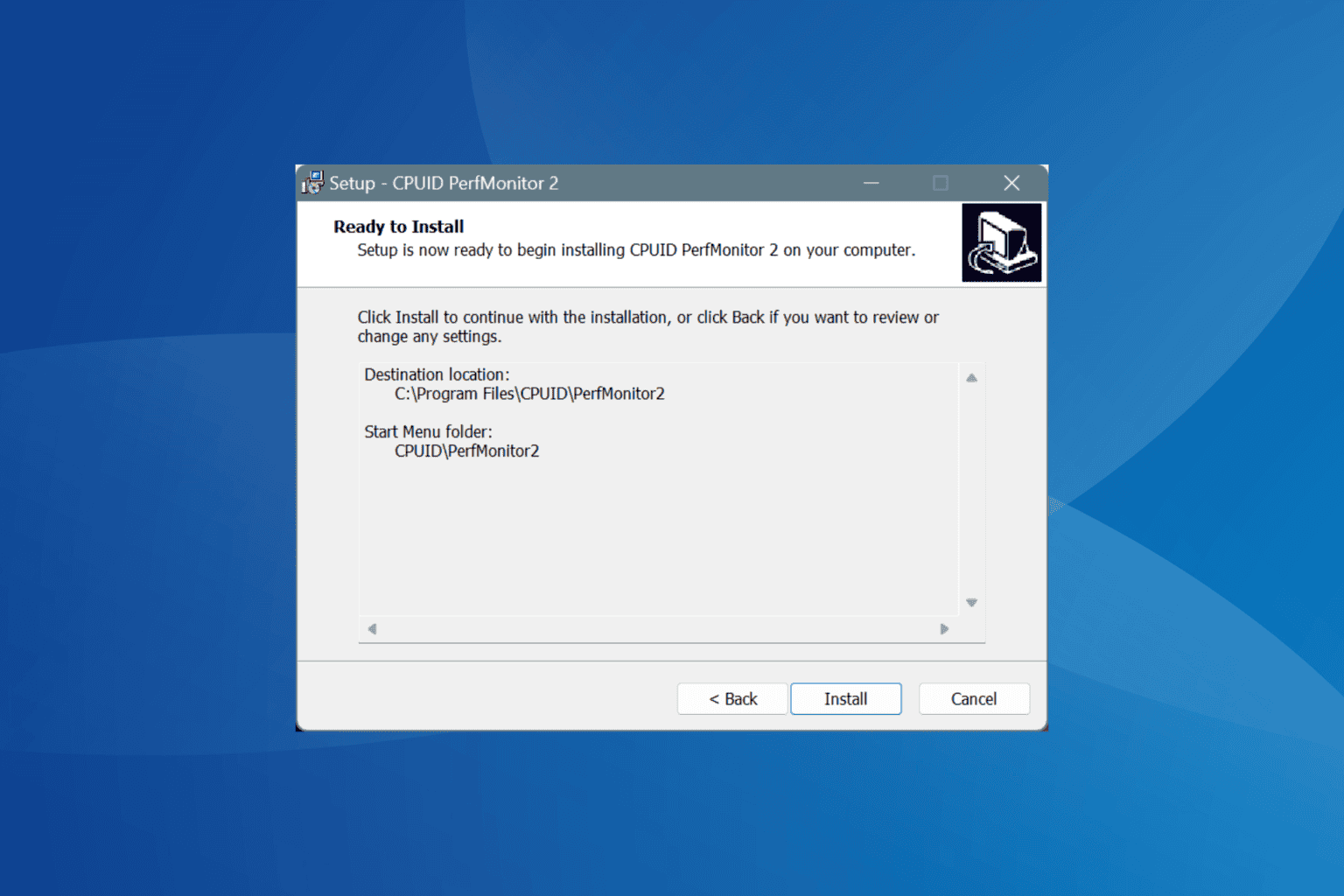
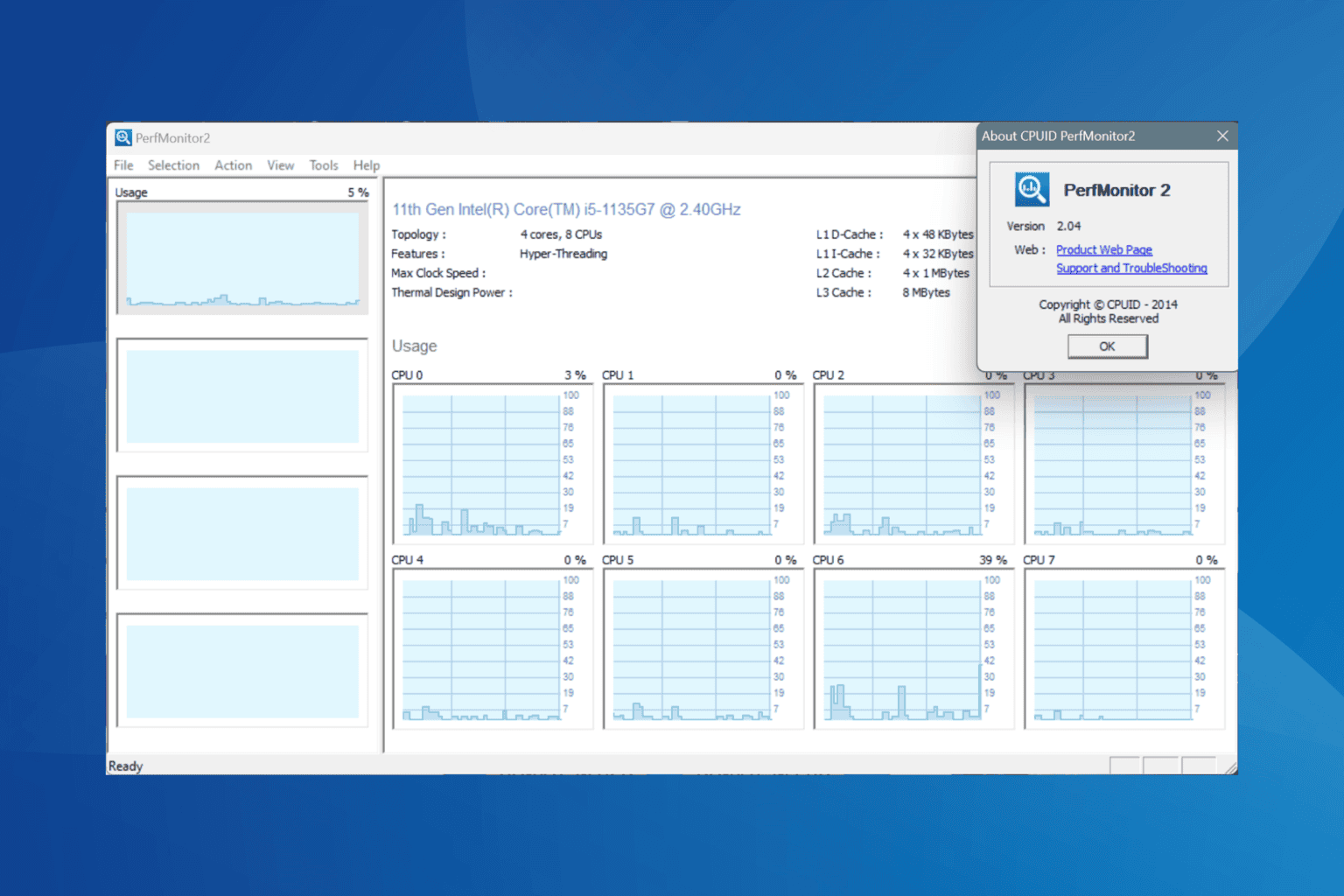
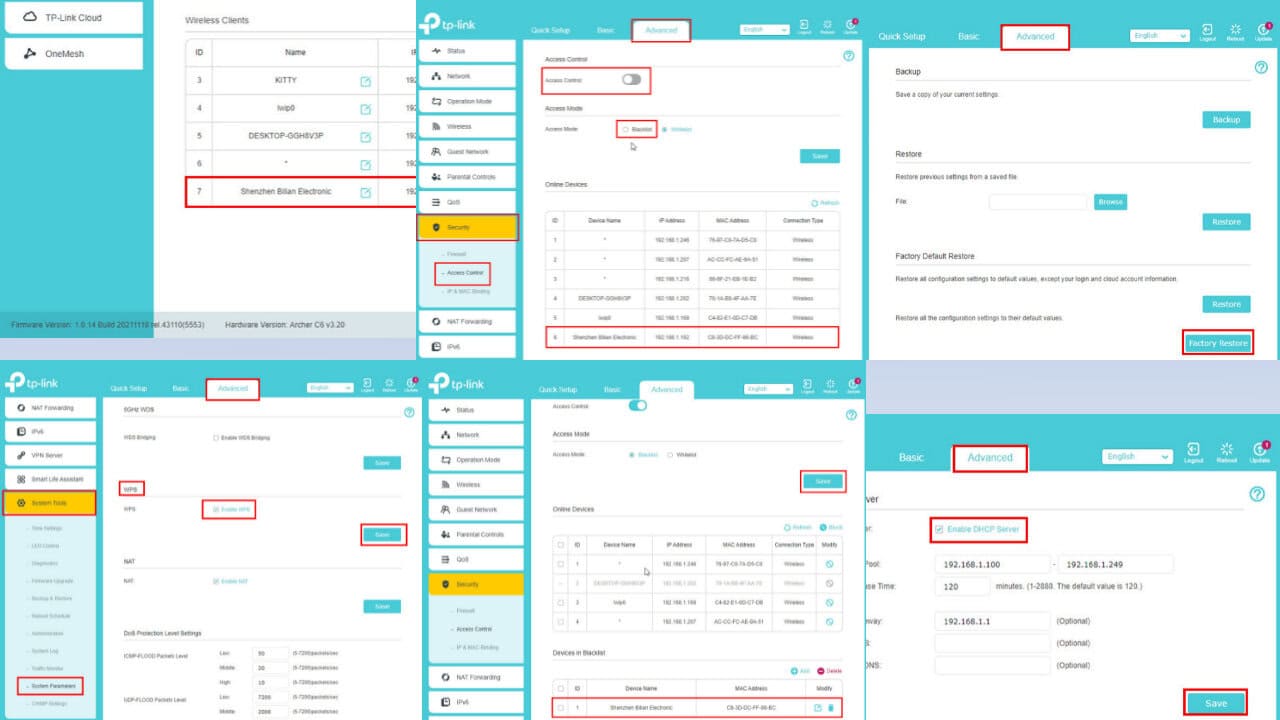
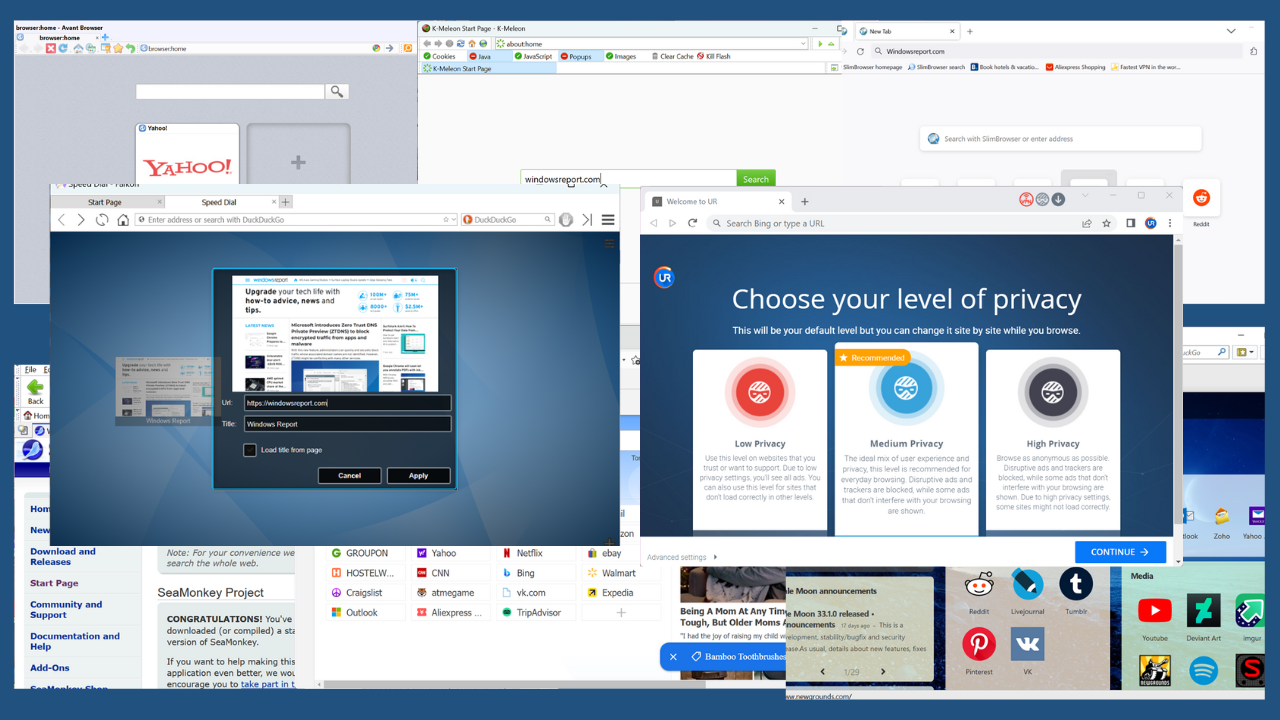
User forum
0 messages